The Royal Borough of Kensington & Chelsea. Knightsbridge. Notting Hill. Property. Harrods. Money. Bourgeoisie. Rolls. Bentley. Chelsea Tractor. White & uptight. Rich.
A series of stereotypes. A series of assumptions made. A series of images. Of great wealth; of London gentry, all suits and ball gowns; of the richest in society; of politicos and financiers; of big businessmen and banks; of embassies and Royalty.
An Alternative View
Wornington Word is about none of these. It is an alternative view of a complex, multi-layered place, as told by the residents who live there, and by reading between the lines of the propaganda of gentrification.

Pattrina runs the Venture Community Centre & adventure Playground on the estate, which originally started in the 1950s as resident-built play area on a piece of waste ground. © Kevin Percival Photography 2022
The project focusses on and celebrates the numerous overlapping communities that make up this diverse area. The gentrification is reflective of broader trends across London, but seen through the specific lens of a single housing estate in the midst of redevelopment.
Wornington Green is an estate of mixed council and private homes, built between the 1960s and 1980s, comprising of 538 flats, housing approximately 1,700 residents.
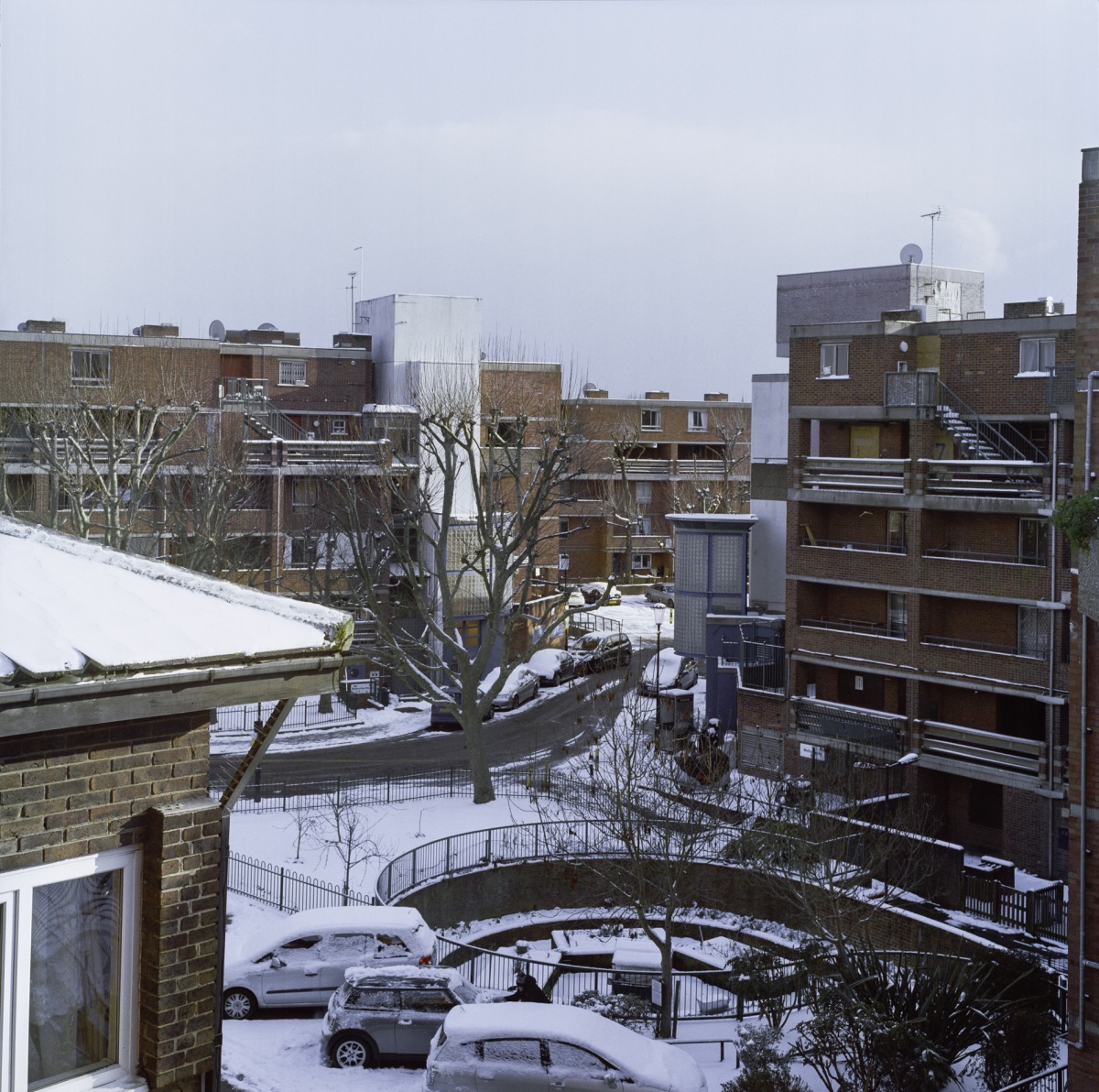
Looking South-East across the estate from Thompson House towards Katherine House. From left to right: Pepler House (left foreground), Katherine House (middle background), Wells House and the community garden, and Rendle House. Winter, 2017. © Kevin Percival Photography 2022
The regeneration was initiated by what was then Kensington Housing Trust (now Catalyst Housing Ltd), in response to ‘problems arising from both its design and construction methodology; … inherent problems with access, security, poor design and layout of homes.’
Initially – when the redevelopment was first proposed in the early 2000s – long-term residents, mindful of the shared experiences and community which had flourished, fought hard to save the current buildings on the estate.
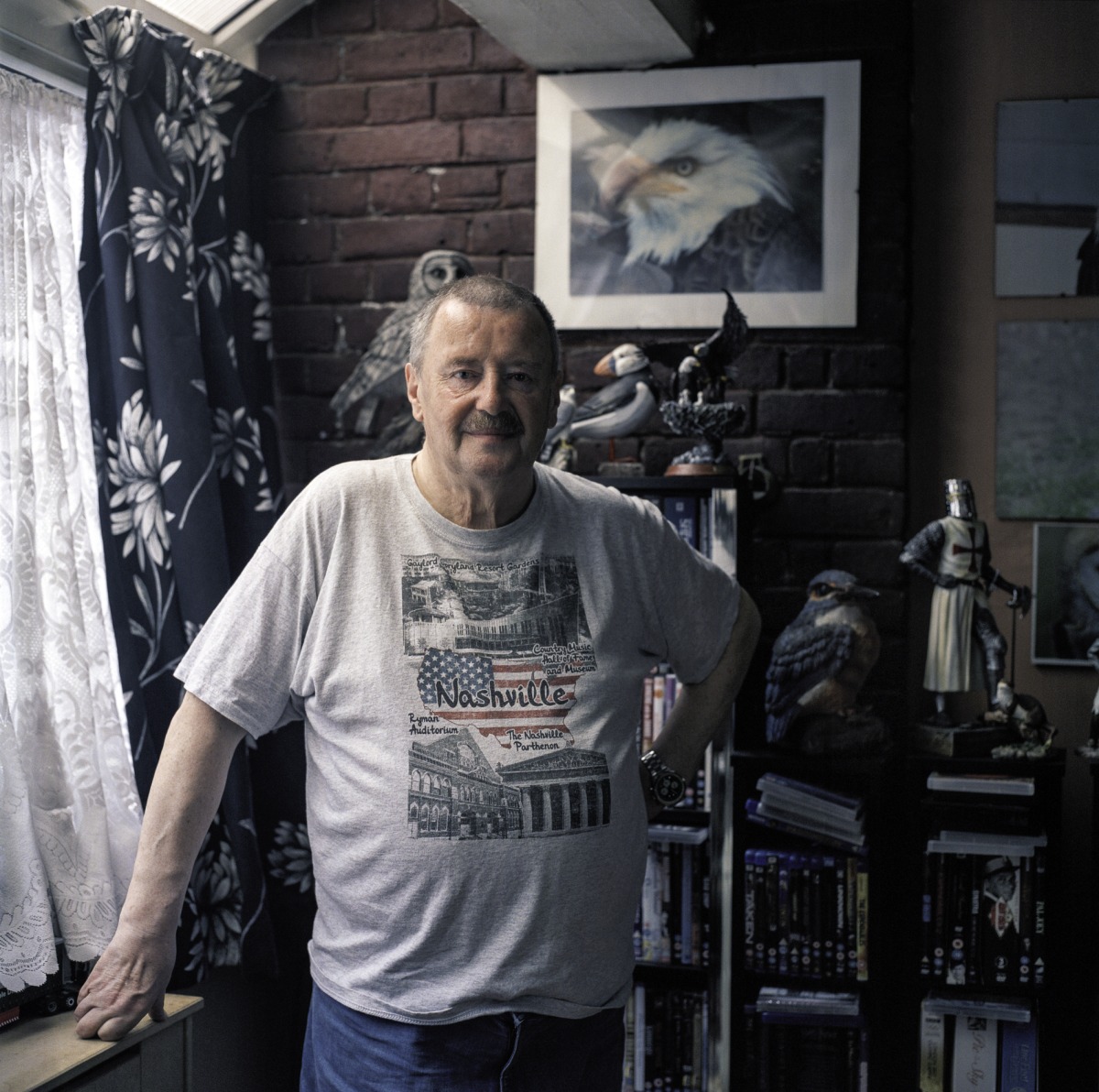
Keith has lived in the area since 1963 and was one of the first residents on the Wornington Green estate when the first buildings were completed in the 1960s. He was and is very active in a number of local residents’ groups and campaigned to save the estate from demolition in the 80s and 90s. © Kevin Percival Photography 2022
Keith, former Chairman of the Wornington Green Residents’ Association, has been an active voice in the community since the 60s: ‘These buildings should have lasted a lot longer than this from the 60s and 70s. You shouldn’t be building buildings like this and then have to pull them down again after such a short time. It’s ridiculous. It’s only because they weren’t maintained to a decent living standard.’
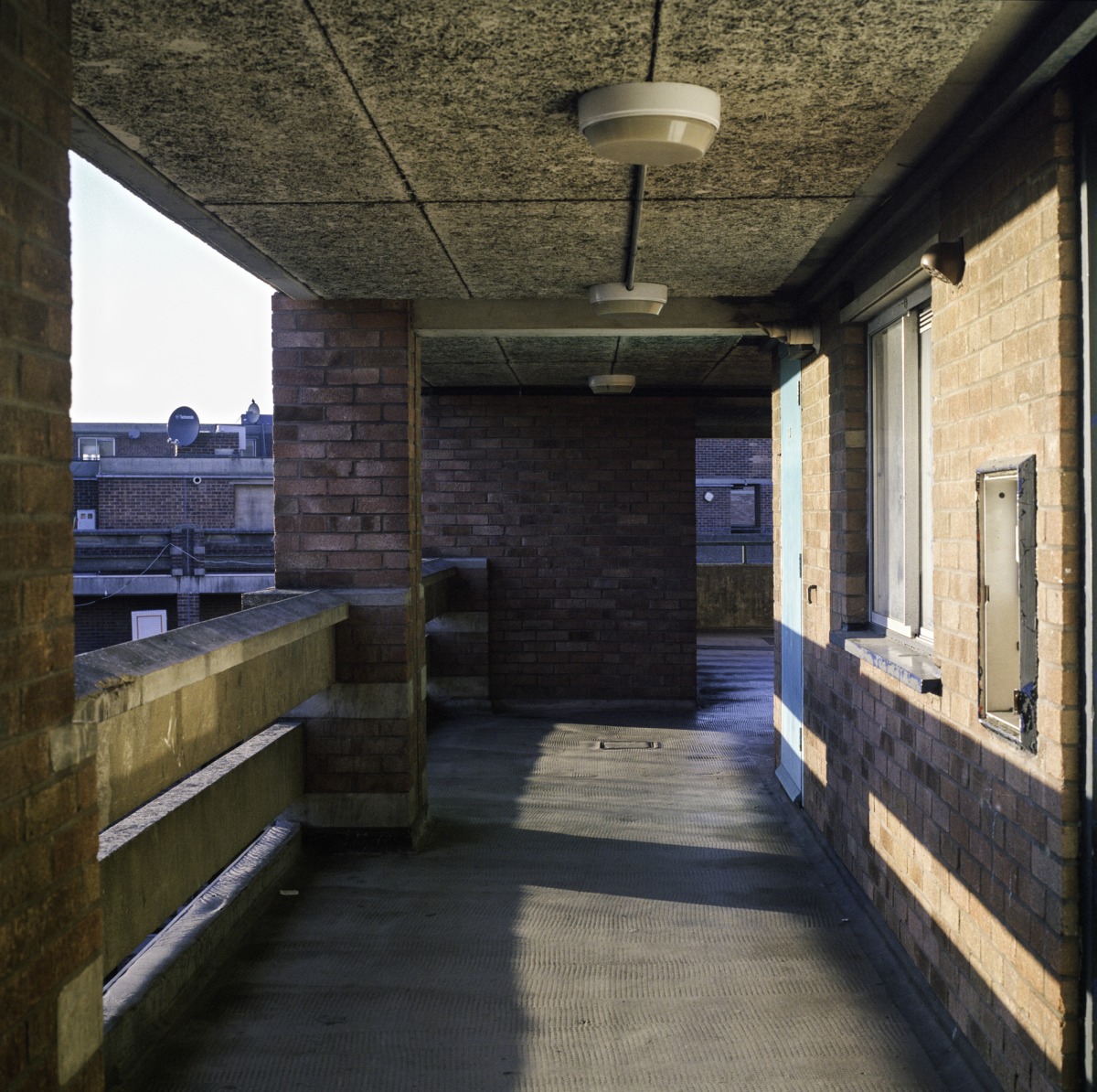
Raised walkway, Macaulay House. © Kevin Percival Photography 2022
‘Changes? Nobody likes changes. We was all in uproar when we heard that they were going to knock it down. My block, which is fortunate for me, is in Phase 3 [of the development]and I love my little flat so I’m hoping they’ll run out of money by the time they get to me, but I know that’s not going to happen,’ adds Cheryl, who has lived in Ladbroke Grove since the 70s, first moving into her current flat in 1975. ‘It’s a nice quiet block I’ve been living in, and I’ve been fortunate to have good neighbours. What I used to like; if anyone in the block died, you’d get someone come and knock and say ‘Oh do you know so and so died’, and they collect money, you can put in 50p,10p, £5 and they’d buy a wreath and say this is from Pepler House …’

Peter works as a dog walker and has lived on the estate for many years. We shot a number of images together, this one was his preferred idea. I always prefer to work with a sitter to find a pose and location which suits them and allows them to be portrayed as they wish. © Kevin Percival Photography 2022
Rehousing
Many residents have thankfully been rehoused in the new builds on the estate. Vanessa experienced a similar sense of community spirit growing up in Wornington Green in the 1990s: ‘There was a good community feel, very multi-cultural, especially on our floor. We had Moroccans, we had Vietnamese, we had Ethiopians, we had Africans, and us Colombians. So on our grounds, you know you would walk down the corridor you could smell lots of nice food from all around the world… When they were allocating the [new]flats we did try [and make]it so we could be together, next door to each other because that’s all we’ve known. But it didn’t work out that way. So yes, it’s different. We don’t have that same familiarity … We are starting again.’

Vanessa grew up on Wornington Green, and still regularly visits her mother on the estate (though they have recently been moved into one of the new builds). © Kevin Percival Photography 2022
Whilst Vanessa has now moved away from her family home to start her own family, housing co-op resident Micky laments the difficulties younger generations have if they want to stay in the local area: ‘…you know they can’t afford to live there, unless they’re living at home with their parents you can’t rent a flat in Notting Hill, it’s really, really expensive.’

Raised walkway, Chesterton House. View North-East, towards Trellick Tower. © Kevin Percival Photography 2022
‘My fondest memory of the area is bringing up my children here and being happy with the diversity, the different people that they meet, people they play with from all over the world. Really important to me… They’ll talk to anybody, they’ve got no prejudice and I really put that down to living on this estate.’
Renegade
This diversity is rarely discussed in relation to Kensington – it is usually only in the context of tragedies such as the Grenfell fire in 2017, or the Notting Hill Carnival that such rich cultural heritage is acknowledged.
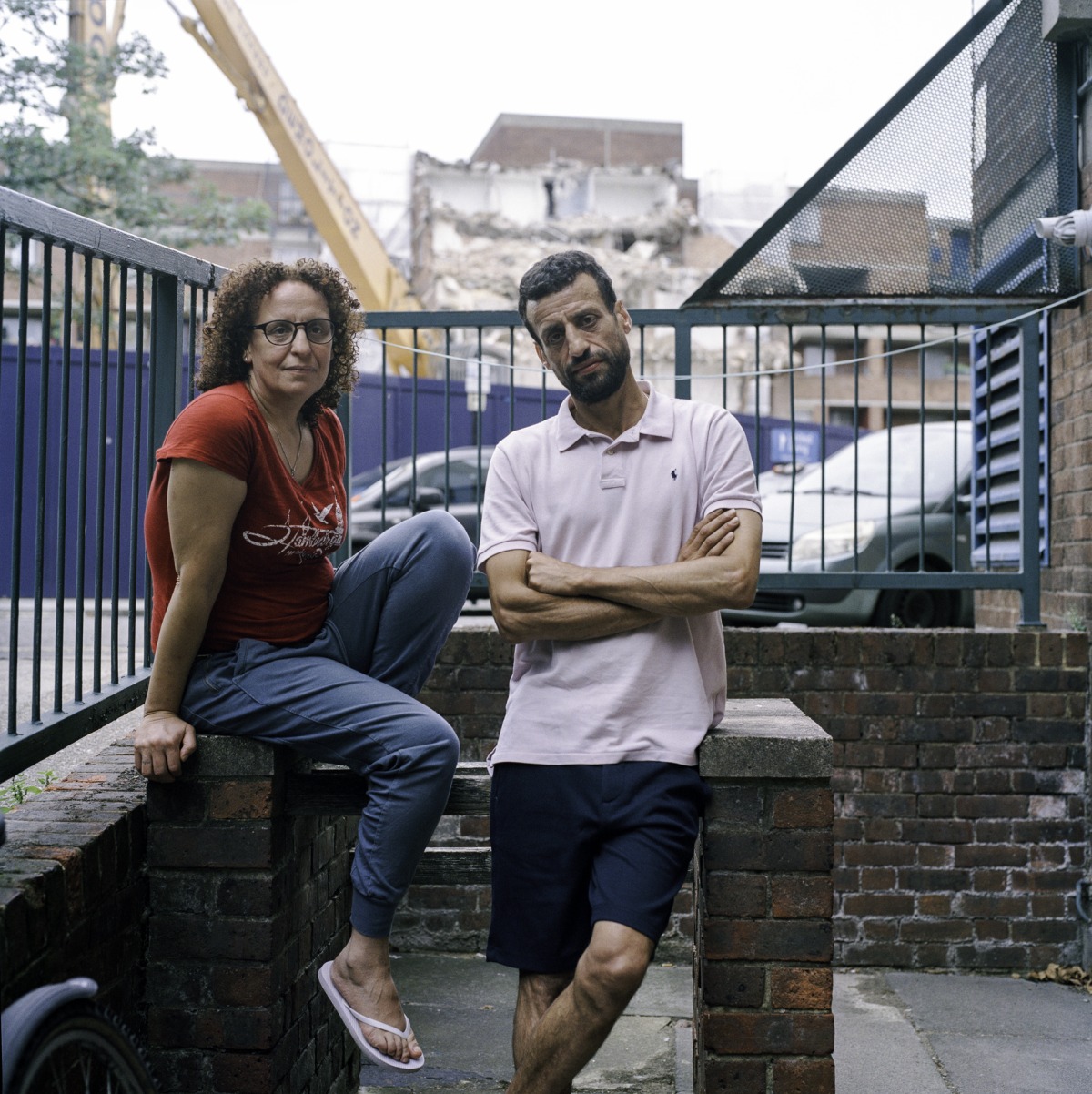
This brother and sister duo- Rachid and Latifa grew up on the estate and remember running from one side to the other using only the aerial walkways: ‘your feet wouldn’t touch the ground.’ We decided we’d make the portrait to show both their current flat and the on-going demolition behind. © Kevin Percival Photography 2022
The Wornington Word project, instigated by Renegade Theatre, aims to record and archive the everyday of this diverse community through the history of Wornington Green estate residents, from the 1960s to the present, through a time when the estate was permanently changing.
The images here were made in partnership with Renegade, to develop a personal documentary response to living on the estate, alongside a programme of residents’ workshops, to capture these stories before they disappear into London’s background hum.
Natasha of Renegade Theatre managed the project:
The people who live on the Wornington Green estate have contributed to the diverse, close and distinct character of Portobello and Golborne roads. They are part of North Kensington’s culturally rich fabric and their warmth, experience and history cannot be allowed to fade away. Nor can the estate’s expansive views across London, wide walkways and mature green trees disappear without record. The Wornington Word catches the estate at the end of its era. So that, after the buildings are demolished, it can still be seen, and its unique working-class voices still heard.
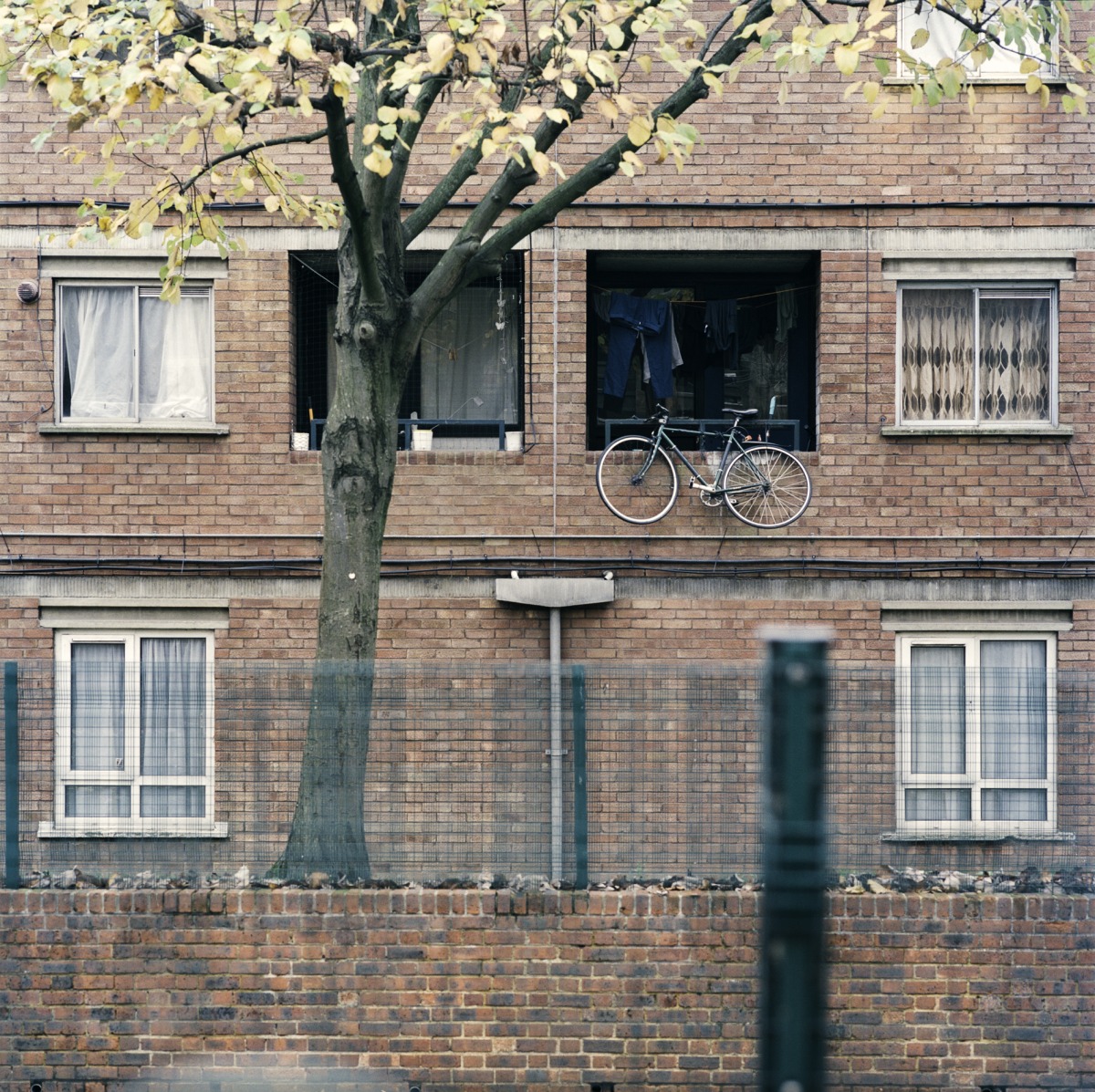
© Kevin Percival Photography 2022
Two Independent Practices
The project began through uniting two independent practices. Natasha conceived of the oral history side of the project as a result of her previous community theatre projects and her interest in documentary theatre, whilst I had been documenting the local area and the development on-and-off for several years.
When Natasha began working on the proposal for Wornington Word, it became clear that she wanted to explore several methods of recording the estate. We began to collaborate together- I donated my existing archive of photographs, and added more as we engaged residents in recording oral histories.

Cheryl, who has lived in Ladbroke Grove since the 70s, first moved into her current flat in 1975. © Kevin Percival Photography 2022
We ran workshops for the residents: photography, filmmaking, creative writing, oral history taking, social media training and acting. Part of my role involved documenting the community participation as well as continuing my on-going photography of the estate.
As we had both lived on the estate for a long time, it was essential to us that the residents be involved throughout the process. At the beginning of 2020 there were three key outcomes: a collection of seventeen oral histories and accompanying portraits, a collection of over two hundred photographs taken by residents, and a forty minute documentary film.
All of the above were archived on a purpose-built website and at RBKC Local Studies & Archives.
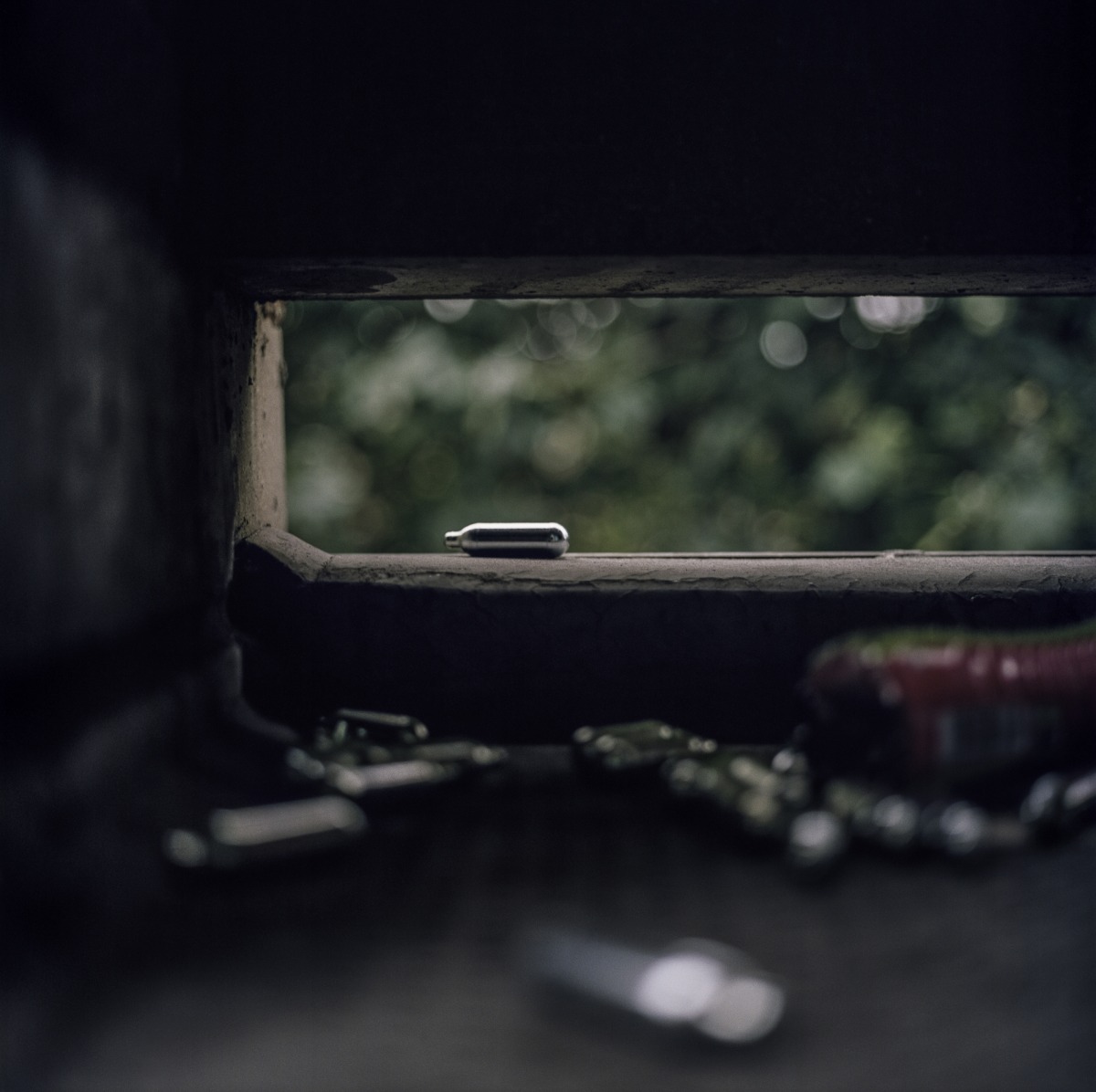
Crime is cited as a key reason for the estate’s decline, however many residents feel that neglect by both the council and KHT were key contributory factors. © Kevin Percival Photography 2022
Inequality
One of the most densely populated regions of the UK, a 2017 study by Trust for London and the New Policy Institute found that, Kensington & Chelsea has the greatest income inequality of any London Borough.
Private rent is the least affordable in London – yet these communities still exist, in many cases over multiple generations, on the same estates.
Oumayma still lives on the estate with her mother, in what has been their family home for three generations: ‘I feel like Moroccans in general just decided to stay here and I feel like my grandad made that decision to stay here, because he didn’t have to fear […] experiencing you know racism or anything like that, because it was already quite integrated at the time. Spanish, Portuguese, Jamaican, Caribbean; really mixed which is really good.’
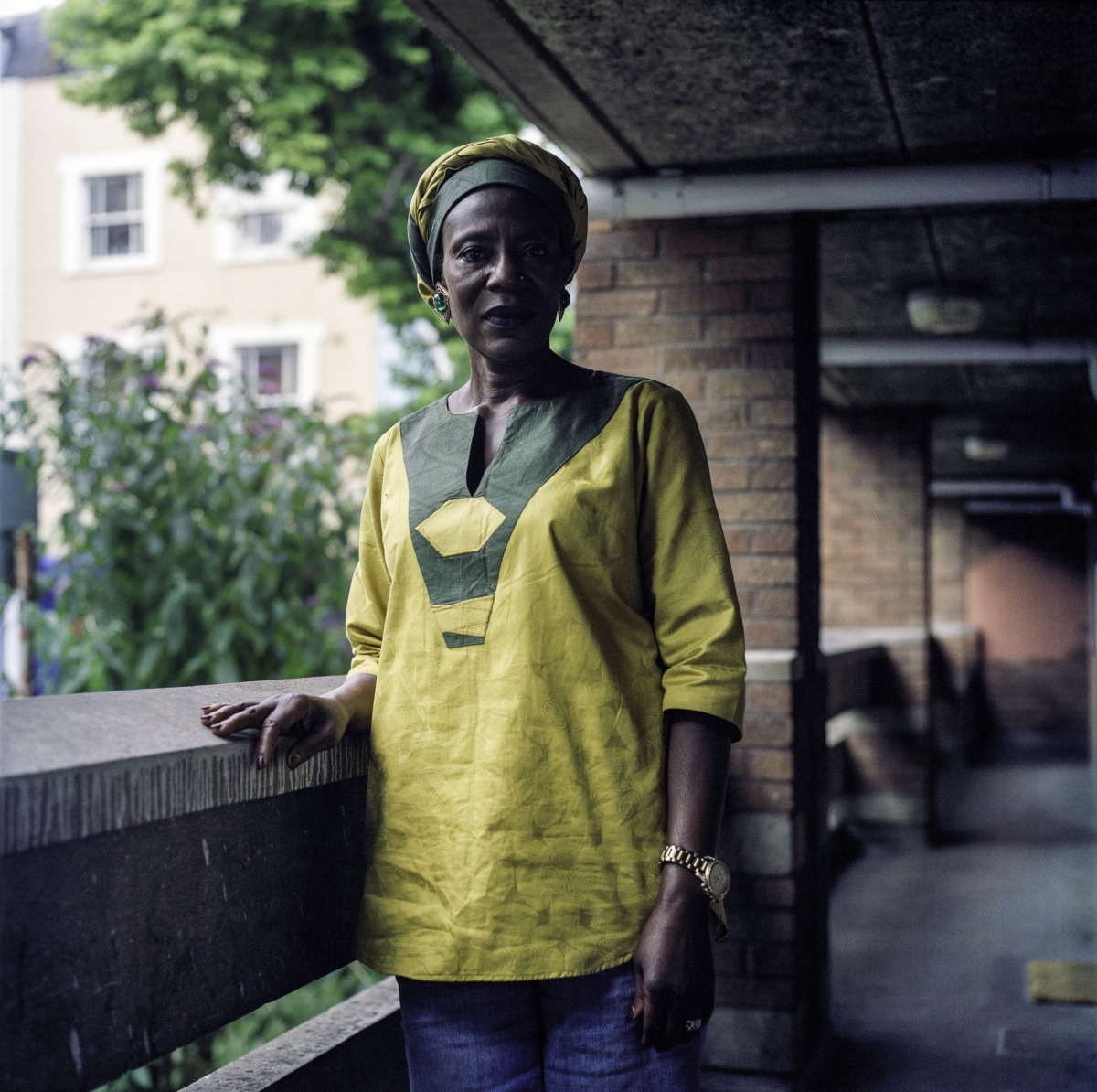
Grace has lived on the estate since she was 28. ‘There were a lot of families, we’d meet up in Athlone Gardens. I would do the cooking and my friend down the road would do the cake and little Caribbean doughs. So it’s like every weekend, somebody makes something from their country and we go to Athlone Park there, children play, parents are digging into eating…’. © Kevin Percival Photography 2022
The importance of the diverse community came up time and again in conversations throughout the project, but the reality is that the cost of living in the borough is gradually reducing this diversity and forcing many residents to re-evaluate.
Though many on the council register will be able to stay in new flats on Wornington Green, their children may find themselves priced out of living locally to their parents. In addition, many of the prejudices shown by RBKC, their contractors and associates during the on-going Grenfell Tower Inquiry, continue to be present in discussions with residents on the Green.
‘It’s always been a diverse area.’ Latifa begins very carefully. ‘However, at the moment, people have just come in from other places and [those]people have found that this place is very trendy and they want to claim it for themselves. We were having a viewing of [my mum’s]new flat, her new permanent flat, and my sister and I, were saying that it was, “Oh, it’s a bit small” blah, blah blah. And then somebody turned round and goes, “Do you know how much this cost? At least £2 million”. Do you know what I mean? So you already feel like somebody’s doing you a favour by letting you stay here.’
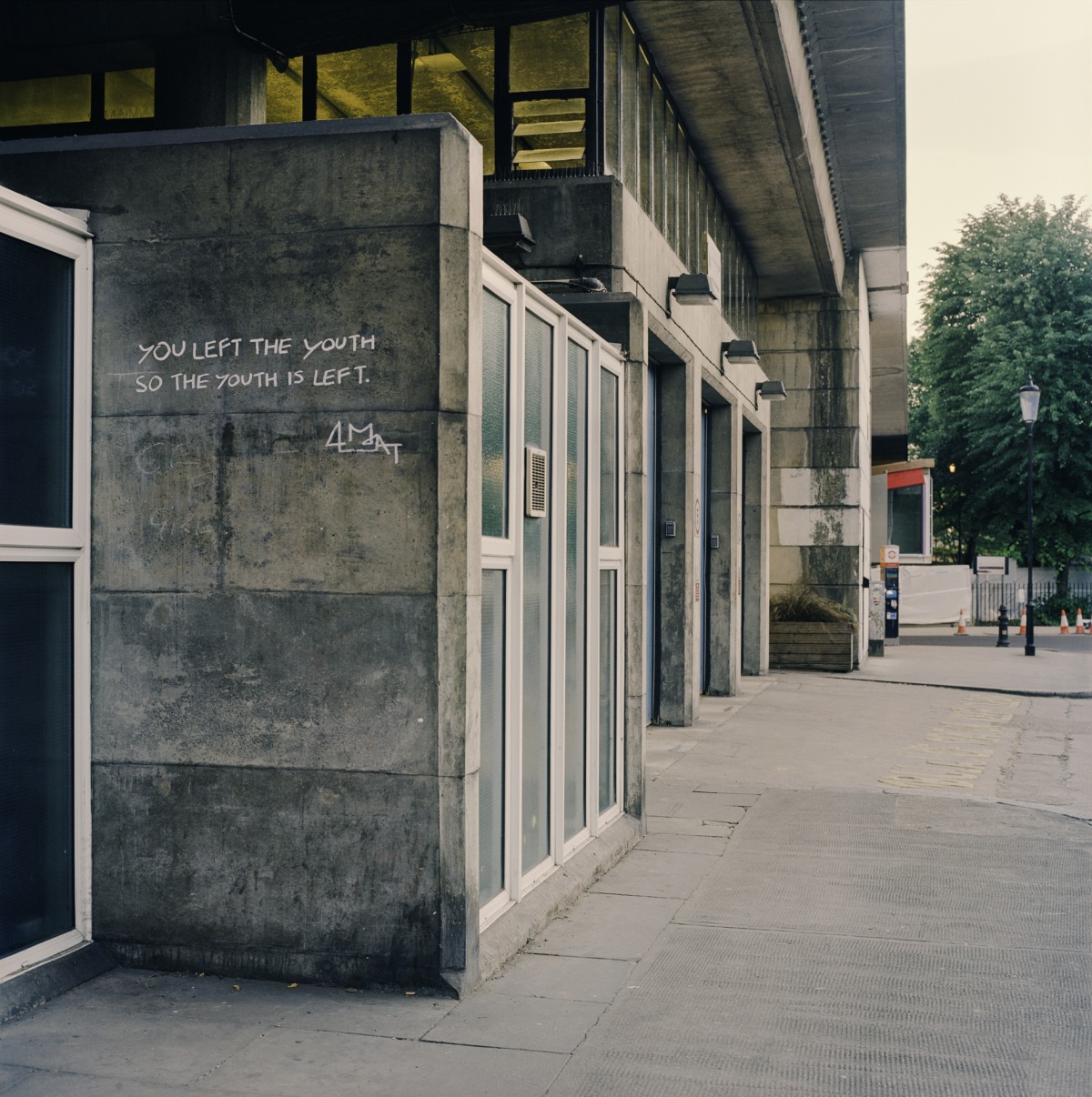
Graffiti found under the Westway. © Kevin Percival Photography 2022
Strong Preference for Low-Rise
Latifa’s experience is not unique. When the original plans were drawn up, resident consultation indicated a strong preference for low-rise accommodation at a similar height to the current blocks, and the regeneration was designed accordingly.
These plans were approved by RBKC (despite fierce resident objection on other grounds), who indicated that the new buildings should not exceed the height of those currently on Wornington Green. Having started in 2006, the final phase is currently under consultation, as the original planning permission was granted so long ago.
Catalyst are now proposing to include a fifteen-storey tower block in Phase 3 of the regeneration program.
And the new-build flats already have teething problems. Oumayma’s grandmother moved into one of the new flats and quickly had difficulties: ‘…they build them too quickly, she’s not a massive fan because she’s experienced some issues – no heating, no hot water.’
Other complaints include burst water pipes and cracking plaster. In 2021, scaffolding was erected around some of the first new builds completed on the grounds of fire-safety.
Set against a background of austerity and gentrification; crime and poor design are often cited as the primary motivations for the estate redevelopment.
Though Catalyst do admit that the perception of crime was in many ways far worse than the reality, due to the closeness of the community. However strong the argument for the development, it remains important to acknowledge what will be lost – how residents’ connection to their homes, their place, will be changed.
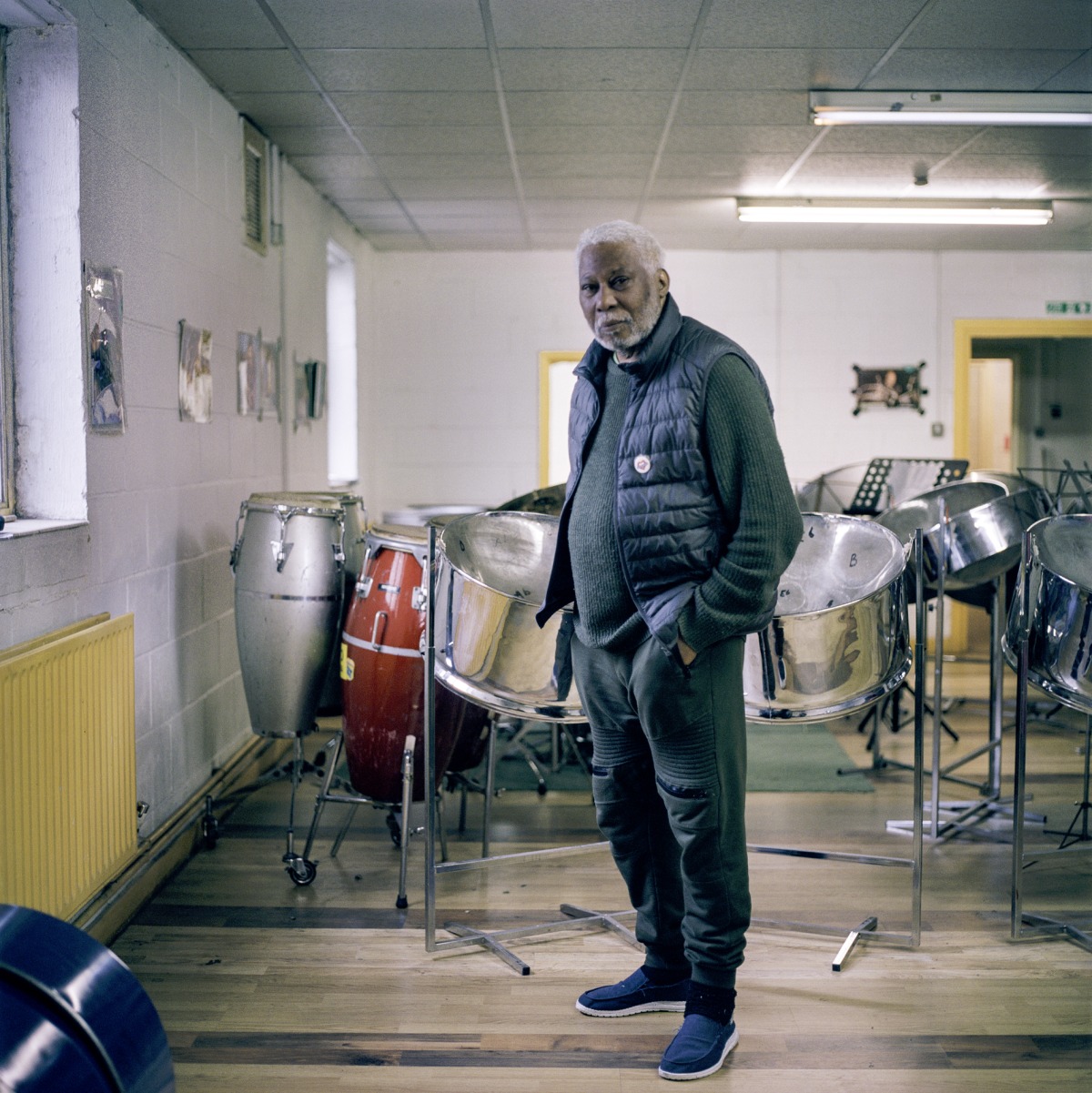
Leslie Palmer – Notting Hill Carnival pioneer – in the pan yard at the Venture Centre. The centre was instrumental in both starting and shaping the carnival over the years- both as a meeting place and practice centre for steel bands. The estate is right in the centre of the parade route. © Kevin Percival Photography 2022
Reduced to Grit
As I write, the latest phase of demolition is in full-swing outside my window in the blistering June heat (on what will be the hottest day of the year).
Despite the temperature (nearing 25C at 10am) my windows remain closed. The blocks opposite: five inter-connected low-rises, have been largely reduced to grit.
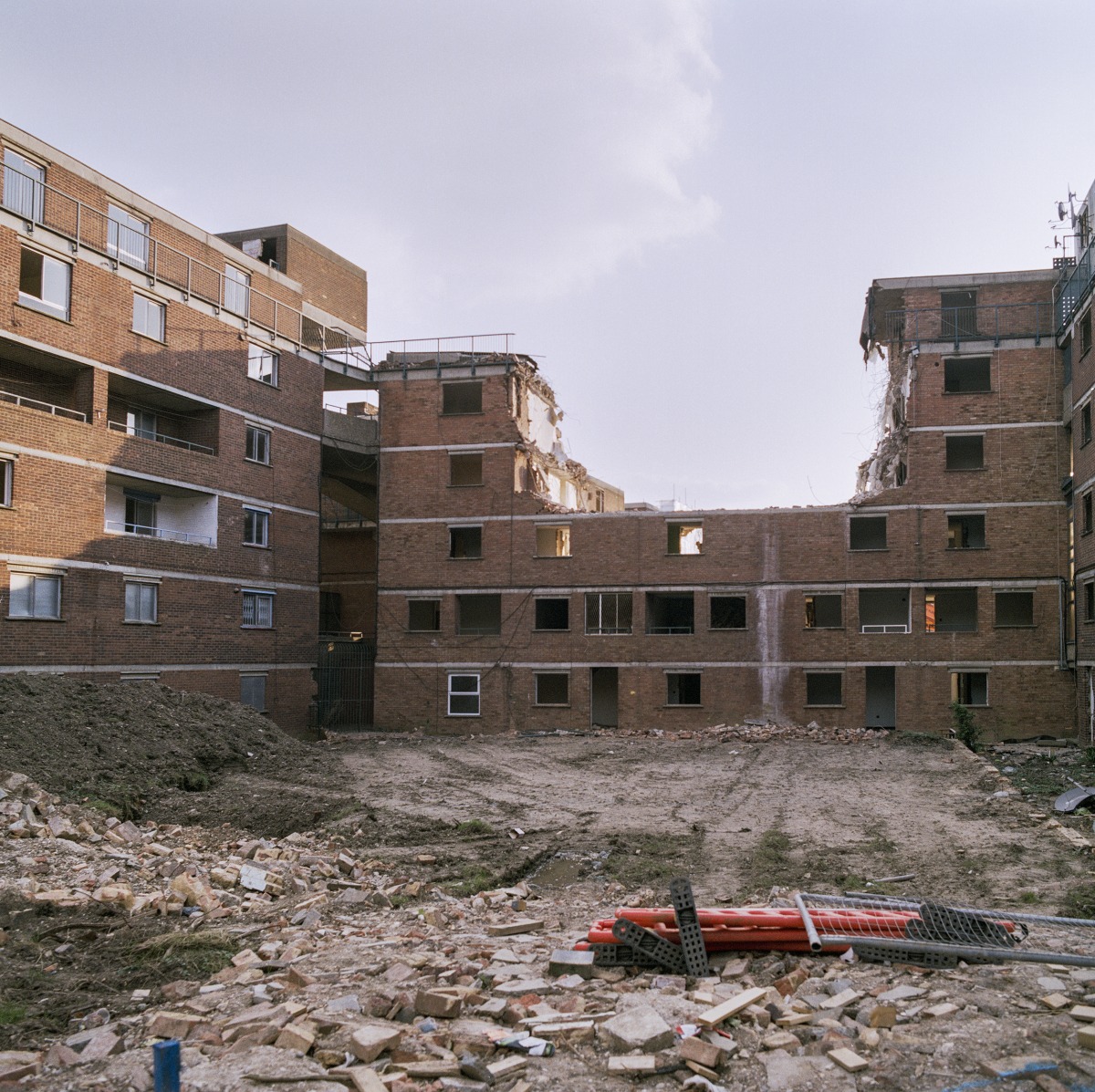
Breakwell Court, Macauley House and Katherine House, mid-way through demolition – May/June 2022. © Kevin Percival Photography 2022
The earth movers grind brick and concrete ever smaller, ever finer in preparation for their final exodus. Dust worries at my ageing glazing and coats cars throughout the estate in sticky layers.
Gallons of water are sprayed across the grinding diggers and over a procession of cars, in a Sisyphean endeavour to enable residents keep using their vehicles.
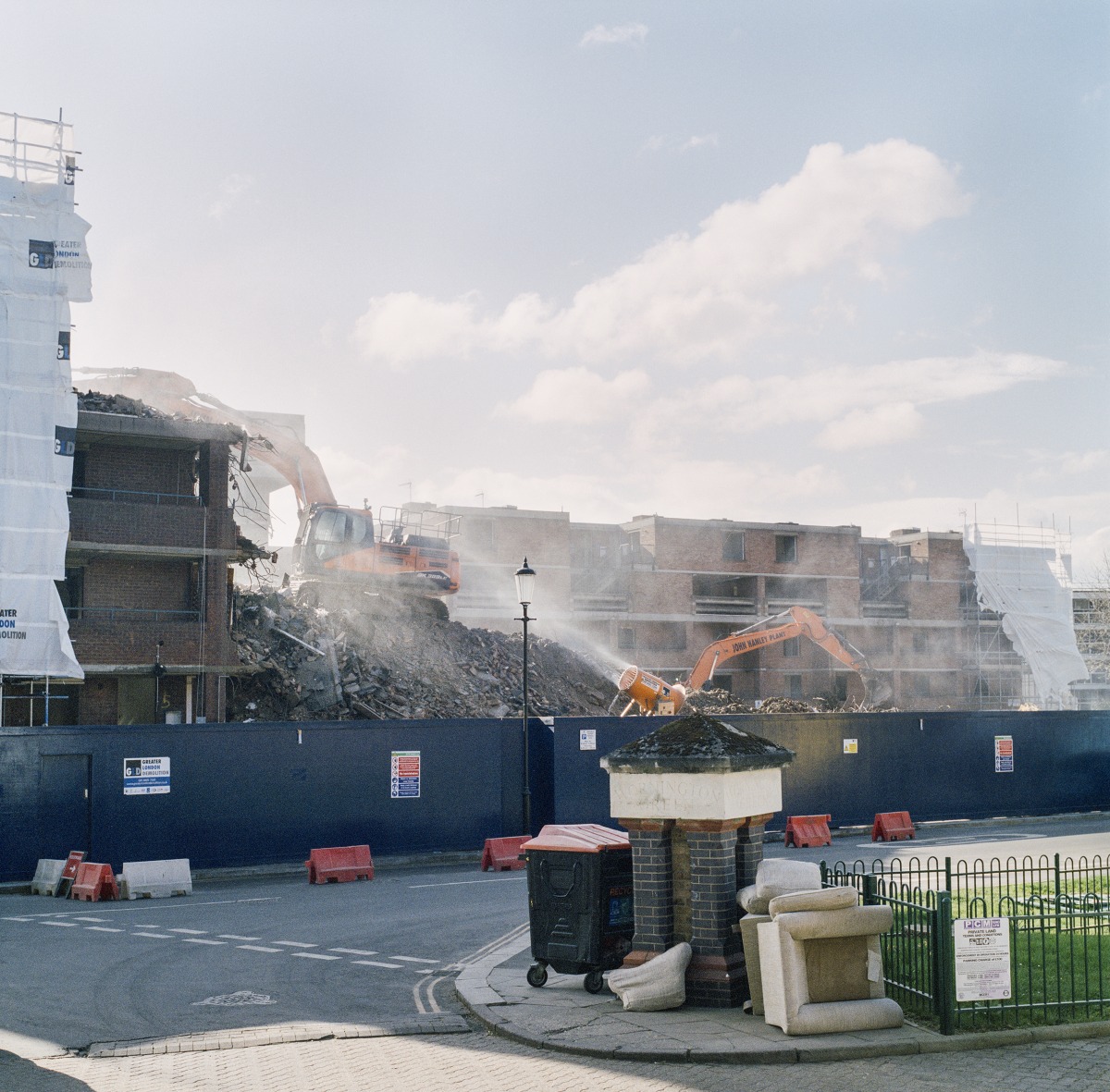
The demolition of Katherine, Macauley, and Chesterton Houses and Breakwell Court. Due to the heat and the dry weather there is a lot of dust produced by the demolition, so gallons of water are sprayed across the site in an attempt to reduce particulates. May 2022. © Kevin Percival Photography 2022
With some luck the interlocking communities of Wornington Green will continue to exist in west London, but it seems clear that their place will remain forever changed.
As for my existence on the estate, this will come to an end within the next two years or so, and whilst I’ve enjoyed my time in this community, I will not miss the relentless reminders of gentrification. It seems appropriate to give the final word to estate resident Rashid: ‘We made the estate, and the estate made us.’
You can hear more of the resident’s stories in their own words and watch the documentary film here: https://worningtonword.renegadetheatre.co.uk/ around the balance of council housing to market flats.
We are an independent media platform dependent on readers’ support. You can make a one-off contribution via Buy Me a Coffee or better still on an ongoing basis through Patreon. Any amount you can afford is really appreciated.



